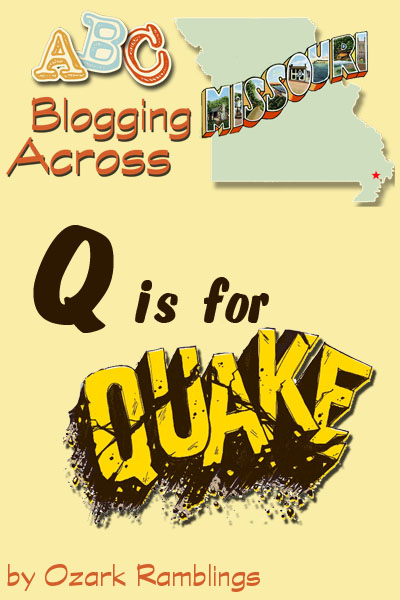Have you noticed a major theme for Hollywood is the disaster genre. We’ve had volcanoes, killer asteroids, floods…my TV guide even had several listings for a movie called Sharknado. Really? Well, Hollywood should take note: Missouri was the site of one of the most intense and longest lasting series of earthquakes in the world, but I’ve never seen it get a minute of screen time. Maybe that’s because it happened more than 200 years ago.
From December 1811 through February 1812, there were hundreds if not thousands of earthquakes in the southeast corner of what was then still a territory. Three of those quakes still rank among the most severe in U.S. History. Although there wasn’t any seismological equipment to record the event, the evidence lead scientists to believe they were between 7.5 and 8.8 on the Richter Scale: church bells rang as far away as Boston and the Mississippi River flowed upstream
You can read eyewitness accounts from several newspapers and letters. One of the best sources is a letter from Eliza Bryan ….
On the 16th of December, 1811, about two o’clock, A.M., we were visited by a violent shock of an earthquake, accompanied by a very awful noise resembling loud but distant thunder…which was followed in a few minutes by the complete saturation of the atmosphere, with sulphurious vapor, causing total darkness. The screams of the affrighted inhabitants running to and fro, not knowing where to go or what to do---the cries of the fowls and beasts of every species—the cracking of trees falling, and the roaring of the Mississippi—the current of which was retrograde for a few minutes…formed a scene truly horrible.
[From January 23rd] until the 4th of February the earth was in continual agitation, visibly waving as a gentle sea…on the 7th about 4 o’clock, A.M., a concussion took place so much more violent than those which had preceded it …At first the Mississippi seemed to recede from its banks, and its waters gathering up like a mountain, leaving for a moment many boats…on the sand…It then rising fifteen or twenty feet perpendicularly, and expanding as it were, at the same moment…the boats which before had been left on the sand were now torn from their moorings and suddenly driven up a little creek…nearly a quarter of a mile.
Everyone is now familiar with FEMA, government assistance after a major disaster. There was no such aid back in 1812. In 1815 Congress did vote to send $50,000 to victims of another earthquake in Caracas, Venezuela. This prompted William Clark, governor of the Missouri Territory to petition congress for relief for some of its own citizens (nearly 1000 people were killed and 2000 folks were left homeless). No money was sent but they did grant those who lost their homes the right to a new homestead of equal size from other public lands.
It can even be said that the New Madrid quakes played a role in the shaping of the state, although not so much by altering the course of the Mississippi River as you may be thinking. When most people decided to take up the offer for land on more stable ground a cattle rancher John Hardeman Walker decided to stay and buy up his neighbor’s land. When Missouri petitioned for statehood, Mr. Walker’s holdings were south of the intended border. He lobbied congress to have his land included with the state of Missouri rather than the territory of Arkansas—and thus the Missouri boot heel was born.
There is a Historical Museum in New Madrid with displays about the quakes (also Native Americans from the area and the Civil War). Admission is charged but the amount isn’t listed on the website.
I’m linking up with …



1 comment:
That is very interesting. Not something I think of when I think of that part of the country.
Post a Comment